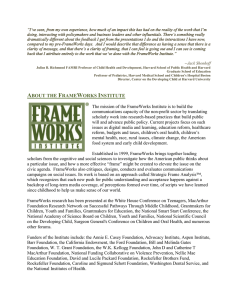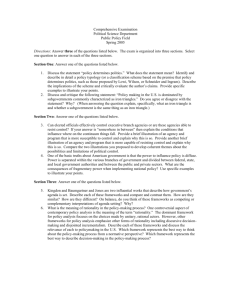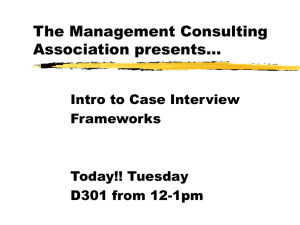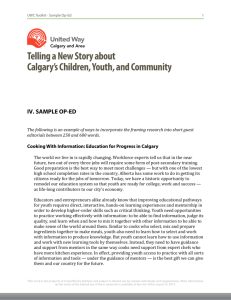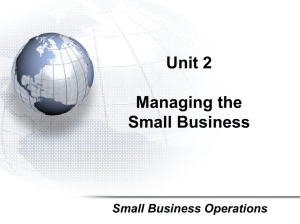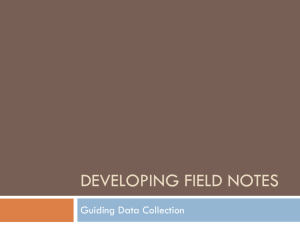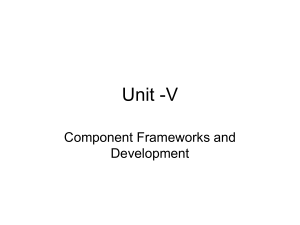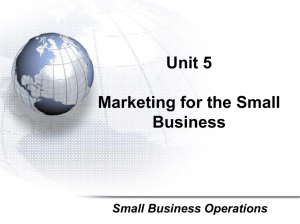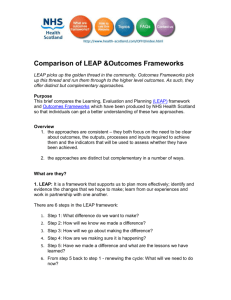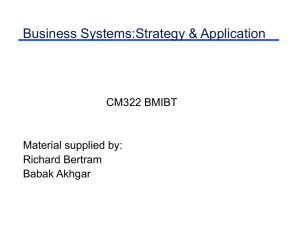Introduction to Marketing - Duke University`s Fuqua School of Business
advertisement
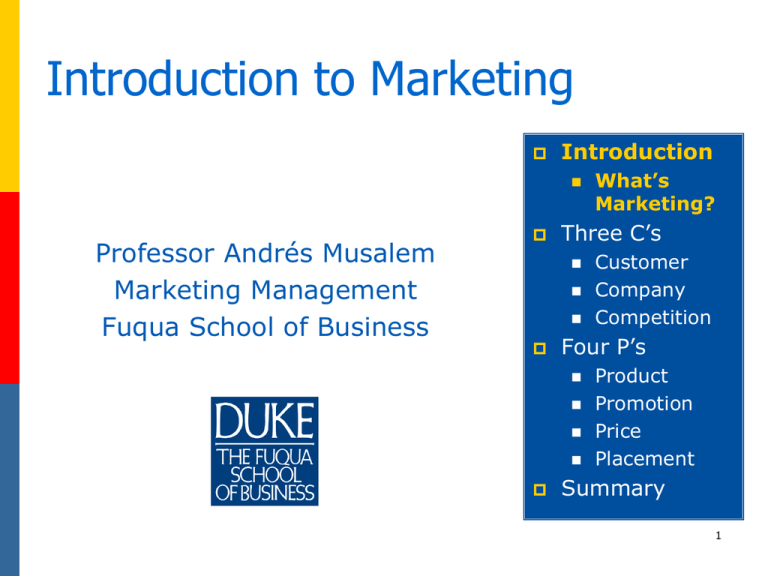
Introduction to Marketing Introduction Professor Andrés Musalem Marketing Management Fuqua School of Business Three C’s Customer Company Competition Four P’s What’s Marketing? Product Promotion Price Placement Summary 1 In-class exercise: Let’s start with a simple word association task… MARKETING Write down the first WORD that comes to mind 2 Does Marketing Matter? Does Marketing Matter? Background: Santiago, Chile Ind. Engineering Find x: How long? MBA, U. of Chile Ph.D., Wharton Research: Quantitative Marketing 6 Teaching Interests: Market Research Pricing Marketing Management GATE (global academic travel experience): South America Marketing Practicum: Hobbies: 7 Agenda Teaching Philosophy Course overview Ford Ka Marketing management Analysis (The 3 C’s) Planning (The 4 P’s) 8 Teaching Philosophy Lesson first, Problem second versus Problem first, Lesson second “Experience is a hard teacher because she gives the test first, the lesson afterward.” 9 Course Overview Goals: 1. Have fun & get you to learn. 2. Frameworks: 3. Tools: 4. Marketing Situation Analysis: Company, Customer, and Competition Marketing Planning and Implementation: Price, Promotion, Place, Product Perceptions, Preferences, Customer Lifetime Value, Economic Value, Brand Associations, Diffusion of new products. Skills: Case analysis Group effectiveness Idea Communication 10 Course Overview Syllabus Class format Grading Lectures and cases. Cases, participation, final exam Graded assignments: weekend following discussion. Course Materials: Required: Cases and some articles (see syllabus) Optional: Textbook, press articles in course pack. 11 Study Teams Action: Name a representative who will be responsible for submitting assignments. 12 Peer Evaluation Your Name: ___________________________________________ Team number : ______________________________________________ In the chart below, write in the name of each team member, including yourself. Estimate the relative effort level and the amount that each team member contributed to the effectiveness. The first column should indicate relative effort and work level while the second column indicates the degree to which each individual contributed to the success of your team. Your estimates can range from 0% to 100% but should sum to 100%. Team Member Name Effort level Effectiveness Total 100% 100% 13 Honor Code We take it very seriously It benefits students Best cases, problems Equal playing field Coordination with other classes 14 Honor Code You may not get information on cases from Fuqua students in other classes or study groups Students or resources at other schools Electronic means You may not give the information to others at Duke or elsewhere Your support is critical for this policy 15 Administrative Issues: Platform: Announcements Assignment submission Handouts and other materials Seating Chart 16 Roadmap for the rest of course 17 Frameworks: Marketing Situation Analysis • Company, Customer, and Competition (3C’s) Marketing Planning • Price, Promotion, Place, Product (4P’s) 18 Frameworks: 3 C’s - Customers Who are the customers? Why do they buy (Value Proposition)? Economic value to the customer: Cost-Benefit Understanding customer psychology: Intangibles What are they sensitive to (e.g., price, features, etc.) How many? Lifetime value, loyalty, customer satisfaction. 19 Customer Analysis: RFID 20 Customer Analysis: RFID Sorensen Associates: RFID technology to track shoppers path inside grocery stores. (PathTracker®) 21 Frameworks: 3C’s - Company Company Strategy: Mission, Objectives Portfolio Analysis: Identify SBU’s Evaluate SBU’s: for example, BCG, GE matrices. Portfolio Design: Build a pipeline of SBU’s at different stages Portfolio growth: expand new/existing Market Growth products/markets. Rate ? Relative Market Share 22 Frameworks: 3C’s - Competition Identify Competitors Industry Analysis (5 Forces) Strengths Weaknesses - Opportunities Threats: SW: Company versus Competitors OT: Industry Competitive reactions 23 Southwest Effect: Competitive Reactions BWI-SDF Fares and PDEW 350 300 250 200 Fares 150 PDEW 100 50 0 1993 1. 2. 3. 1994 1995 1996 1997 Increase in passengers per day each way (PDEW ) Drop in average fare Effects on surrounding airports (lower demand) Source: Southwest Airlines: An In-Depth Review 24 How might the 3 C’s vary by country? 25 Combining the 3 C’s Wal*Mart quits Germany (85 stores, $2.55 billion, 2006): Customers? Competition? Company? 26 Integration 4P’s 3C’s 27 Integration: 3C’s 4P’s What’s the right price for Angiomax? Should XM air ads? How should Should Unilever Ford promote launch a new the adoption of product for the the Ford Ka? low income segment in Brazil? Should Team Sameer use a traditional promotional approach? Should Starbucks invest in improving its customer service? 28 4P’s: 4P’s: Marketing Planning- Marketing Planning Product, Price, Place, Promotion Price, Promotion, Place, Product 29 Frameworks: 4P’s - Product Define the product Core benefit—essence Basic, Expected, Augmented and Potential Product First Mover Advantage 30 Frameworks: 4P’s – Pricing Price is the only P that captures value Small changes in price lead to major profit impact The issues What is the value to customers of the benefits the product provides? How much does it cost to deliver these benefits? How much do or will customers have to pay to get these same or substitute benefits elsewhere (i.e., from competitors)? 31 Importance of Pricing (Price leverage for selected firms)* 1% improvement in price at Creates operating profit improvement of: 28.7% Philips 26% 17.5% 16.7% 6.4% 32 *From Dolan and Simon (1996) Frameworks: 4P’s – Place Channels exist when they are more efficient than direct distribution: M M C D M Channel decisions/issues: Channel depth Channel breadth Channel conflict/coordination C C Manufacturer Retailer Manufacturer Store Consumers 33 Frameworks: 4P’s - Promotion The promotional plan: Target market Objectives Message Media Mix Budget Measure the results Coordinate the process Awareness Interest Desire Action 34 Promotion and Brand Associations 35 Profitability (A Reality Check) Are assumptions realistic? Breakeven analysis Can we sell breakeven volume at given price? How are other company businesses affected (cannibalization)? 36
